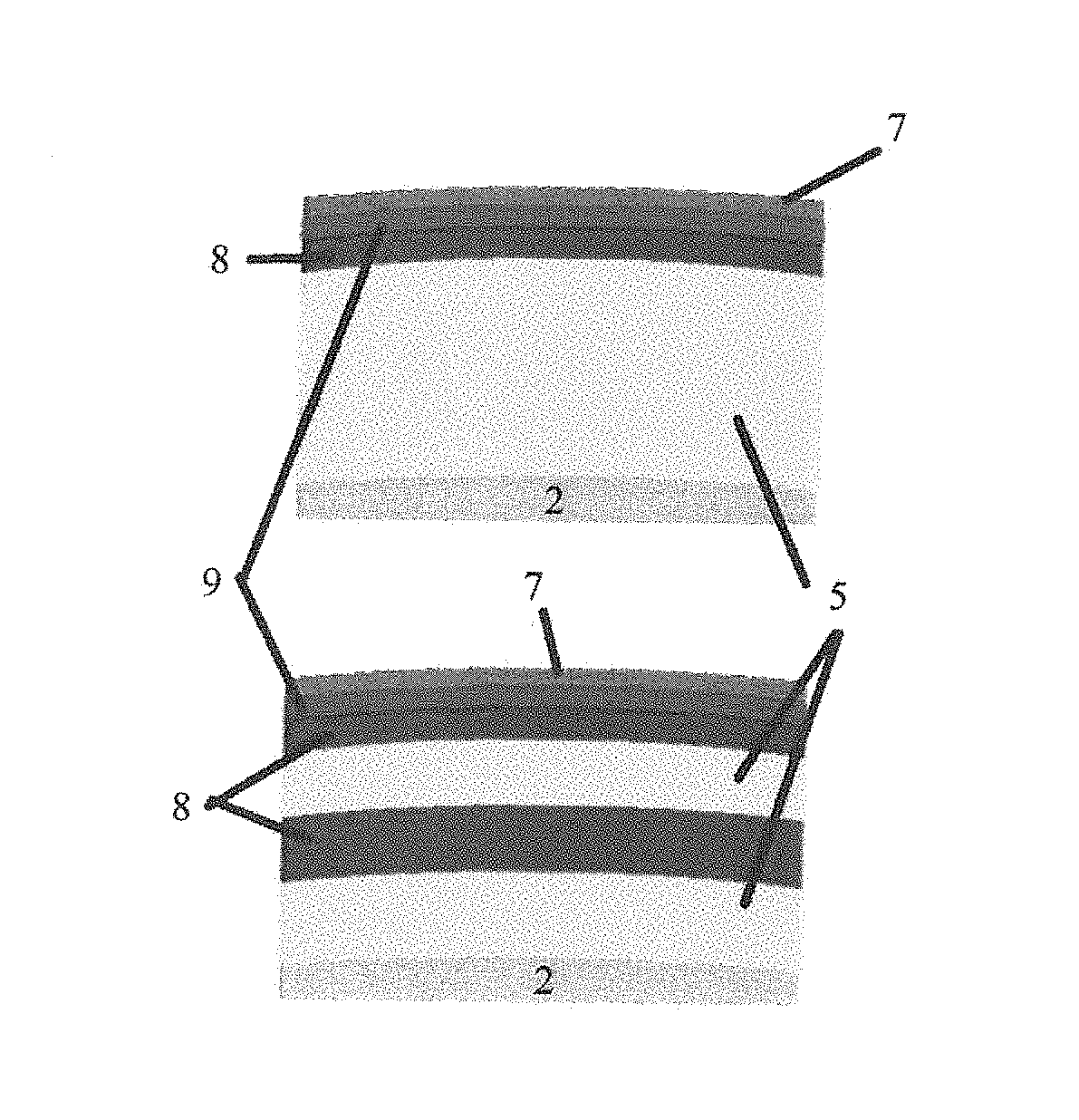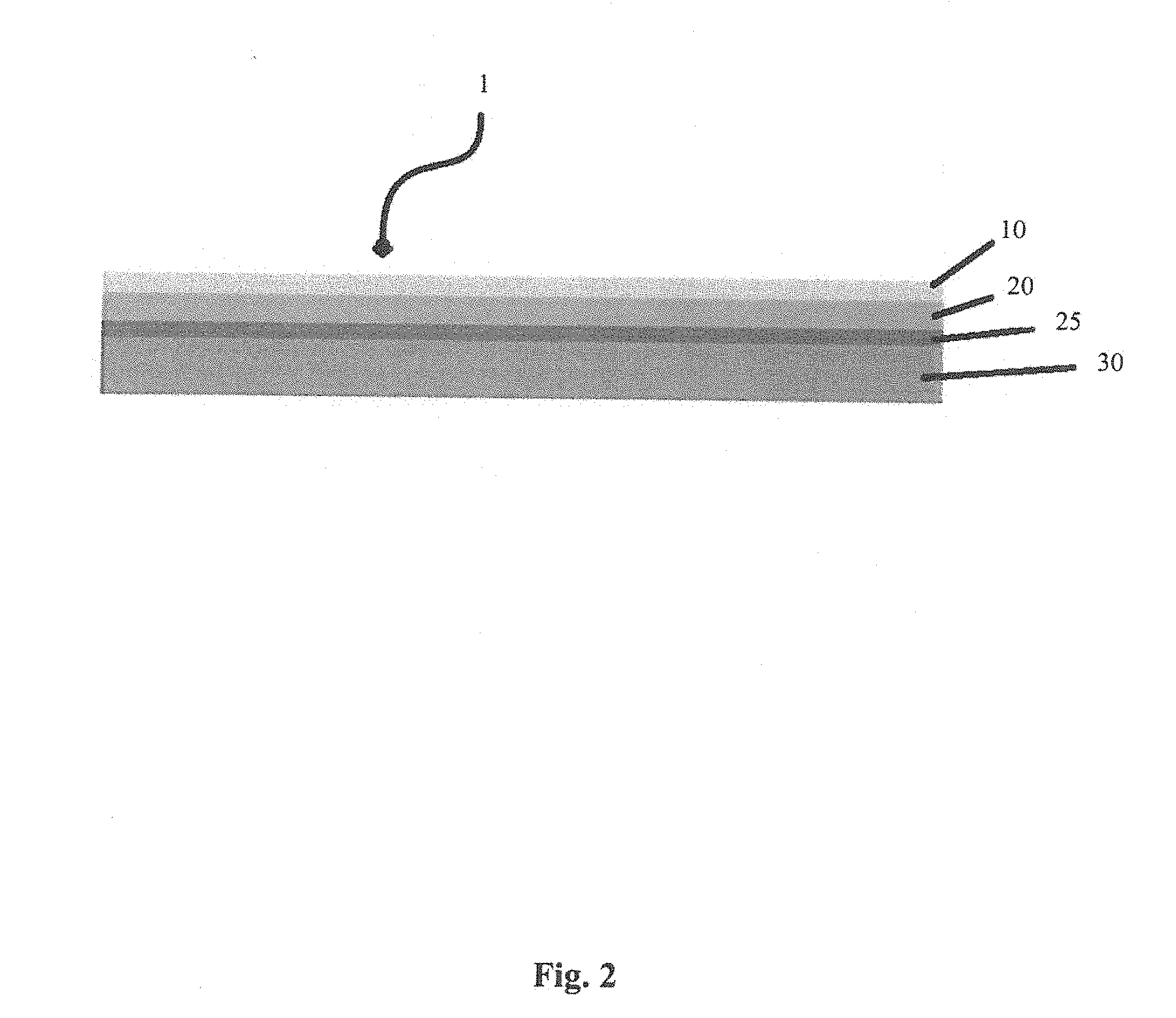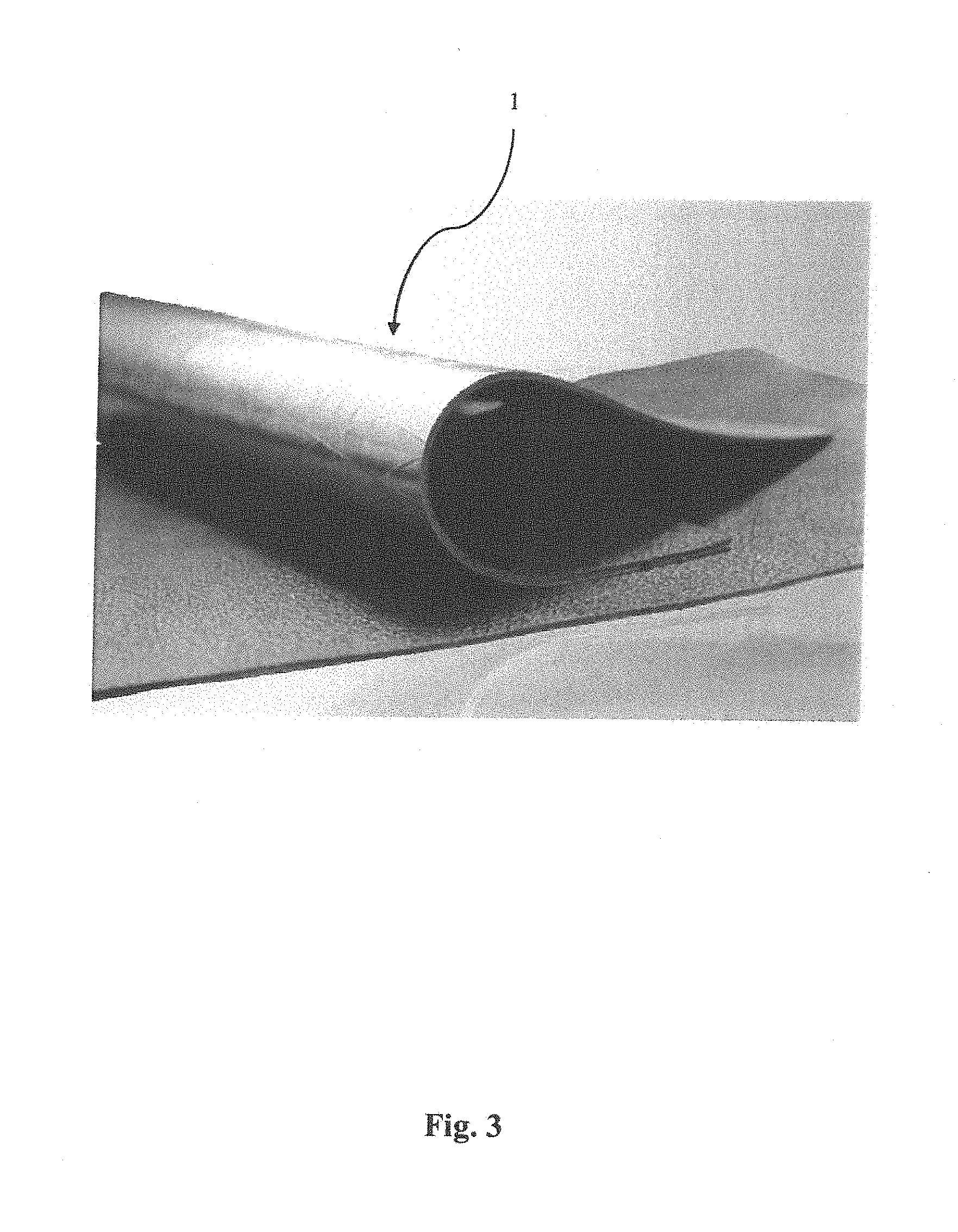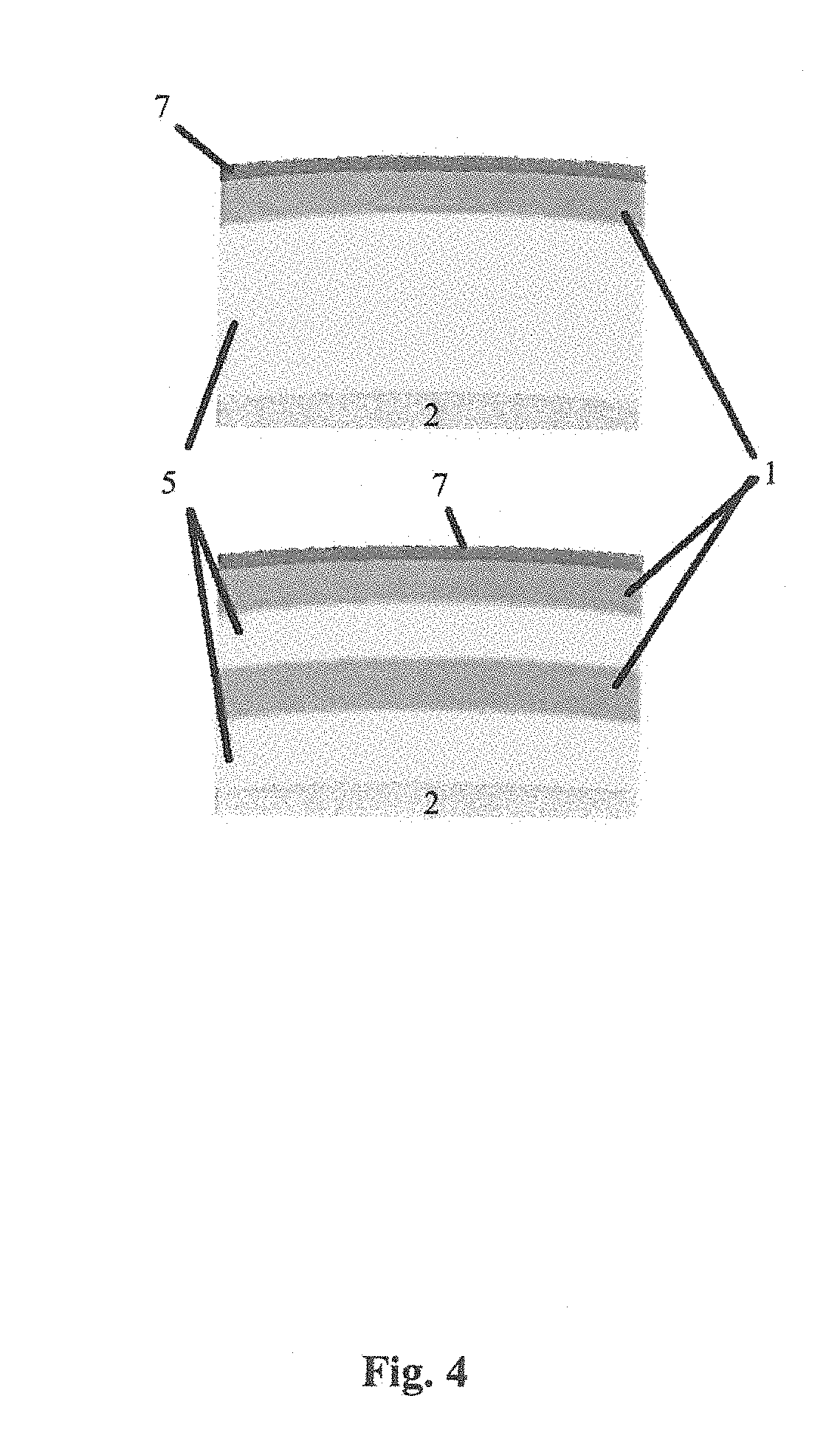Vapour Barrier Lamina
Tsitos; George
U.S. patent application number 16/143829 was filed with the patent office on 2019-04-04 for vapour barrier lamina. This patent application is currently assigned to Pyrotek Pty. Limited. The applicant listed for this patent is Pyrotek Pty. Limited. Invention is credited to George Tsitos.
| Application Number | 20190101236 16/143829 |
| Document ID | / |
| Family ID | 65897243 |
| Filed Date | 2019-04-04 |





| United States Patent Application | 20190101236 |
| Kind Code | A1 |
| Tsitos; George | April 4, 2019 |
Vapour Barrier Lamina
Abstract
A vapour barrier lamina, particularly for acoustic insulation of a pipe or duct, including a fiberglass moisture-proof foil layer, an acoustic insulation layer adjacent a first side of the moisture-proof layer, and a protection layer adjacent a second side of the moisture-proof layer. The vapour barrier lamina may also include a structural layer located between the moisture-proof foil layer and the acoustic insulation layer, for additional protection, and the structural layer may be a fiberglass screen.
| Inventors: | Tsitos; George; (New South Wales, AU) | ||||||||||
| Applicant: |
|
||||||||||
|---|---|---|---|---|---|---|---|---|---|---|---|
| Assignee: | Pyrotek Pty. Limited Girraween AU |
||||||||||
| Family ID: | 65897243 | ||||||||||
| Appl. No.: | 16/143829 | ||||||||||
| Filed: | September 27, 2018 |
| Current U.S. Class: | 1/1 |
| Current CPC Class: | B32B 27/12 20130101; B32B 15/14 20130101; B32B 15/20 20130101; F16L 59/145 20130101; B32B 2307/102 20130101; F16L 55/0336 20130101; F16L 59/029 20130101; B32B 2597/00 20130101; B32B 2307/72 20130101; B32B 27/30 20130101; B32B 2307/7246 20130101; B32B 2262/101 20130101; B32B 2307/3065 20130101 |
| International Class: | F16L 55/033 20060101 F16L055/033; F16L 59/14 20060101 F16L059/14; F16L 59/02 20060101 F16L059/02 |
Foreign Application Data
| Date | Code | Application Number |
|---|---|---|
| Sep 29, 2017 | AU | 2017903961 |
Claims
1. A vapour barrier lamina for acoustic insulation of a pipe, the vapour barrier lamina comprising: a moisture-proof foil layer; an acoustic insulation layer adjacent a first side of the moisture-proof foil layer; and a protective layer adjacent a second side of the moisture-proof layer.
2. The vapour barrier lamina of claim 1, wherein the acoustic insulation layer abuts the first side of the moisture-proof foil layer.
3. The vapour barrier lamina of claim 1, wherein the protective layer abuts the second side of the moisture-proof foil layer.
4. The vapour barrier lamina of claim 1, wherein the vapour barrier lamina further comprises: a structural layer for improving the tear strength of the vapour barrier system.
5. The vapour barrier lamina of claim 4, wherein the structural layer is located between the moisture-proof foil layer and the acoustic insulation layer and provides additional protection of the moisture-proof foil layer.
6. The vapour barrier lamina of claim 4, wherein the structural layer is a fiberglass scrim.
7. The vapour barrier lamina of claim 1, wherein the moisture-proof foil layer is a metal foil, a polymeric film, or a silicone coated fabric.
8. The vapour barrier lamina of claim 1, wherein the vapour barrier lamina has a permeance range of 0.0875 to 7.5 ngPa.sup.-1s.sup.-1m.sup.-2 (0.0015 to 0.13 perms (inch-pound)).
9. The vapour barrier lamina of claim 1, wherein the moisture-proof foil layer is made of a flame resistant material.
10. The vapour barrier lamina of claim 1, wherein the acoustic insulation layer is made of mass-loaded vinyl.
11. The vapour barrier lamina of claim 10, wherein the mass-loaded vinyl has an operational temperature range of -40.degree. C. (-40.degree. F.) to 93.degree. C. (200.degree. F.).
12. The vapour barrier lamina of claim 10, wherein the mass-loaded vinyl has a density in the range of 2 kg/m.sup.2 to 12 kg/m.sup.2.
13. The vapour barrier lamina of claim 10, wherein the mass-loaded vinyl is formed from any combination or selection of polyvinyl chloride, polyethylene, polypropylene and/or ethylene vinyl acetate.
14. The vapour barrier lamina of claim 10, wherein the mass-loaded vinyl includes an inert filer.
15. The vapour barrier lamina of claim 14 wherein the inert filler is any combination or selection of calcium carbonate, barium sulphate or aluminium hydroxide.
16. A vapour barrier for use in insulation of cryogenic pipes, the vapour barrier consisting of a moisture-proof foil layer sandwiched between a first and a second protective layer, wherein the protective layers protect the moisture-proof foil layer against punctures.
17. The vapour barrier of claim 16, wherein the moisture-proof foil layer is a metal foil, a polymeric film, or a silicone coated fabric.
18. The vapour barrier of claim 16, wherein the vapour barrier has a permeance range of 0.0875 to 7.5.times.10 ngPa.sup.-1s.sup.-1m.sup.-2 (0.0015 to 0.13 perms (inch-pound)).
19. The vapour barrier of claim 16, wherein the moisture-proof foil layer is made of a flame resistant material.
Description
FIELD
[0001] The present invention relates to a vapour barrier lamina, in particular to a vapour barrier lamina for acoustic insulation of a pipe or duct.
BACKGROUND
[0002] The increasing worldwide demand for cleaner energy sources has led to a sharp increase in the production, processing, transport and consumption of Liquefied Natural Gas (LNG). The industrial facilities handling LNG require extensive industrial insulation to avoid problems such as boil-off, ice build-up and associated fire hazards. It is not uncommon for a cryogenic pipe to operate at a temperature of -168.degree. C. (-334.degree. F.) in ambient conditions of 32.degree. C. (90.degree. F.), requiring extensive insulation.
[0003] However, the temperature gradient also creates a considerable natural moisture drive towards the cryogenic pipe. Moisture intrusion into the insulation layers degrades insulation performance, while causing ice build-up. Additionally, moisture intrusion can cause corrosion of the cryogenic pipe under the insulation layer, which is a significant safety hazard.
[0004] An additional consideration that has developed in the design of cryogenic pipework is noise pollution. The compressors, reducers, expanders, valves and other pipework accessories are significant source of noise. The noise is detrimental to the structural integrity of the cryogenic pipe, due to vibrations causing fatigue, as well as detrimental to the human working environment. If noise levels are above 85 dBA, reduced working hours or cumbersome personal protective equipment are generally mandated by workplace regulators. Acoustic insulation is also desirable in non-cryogenic applications where waterproofing or vapour proofing may be required.
[0005] The current approach to prevent moisture intrusion and acoustic insulation involves cladding the cryogenic pipe first with a thermal insulation layer, then apply an acoustic insulation layer, and finally a moisture-proof foil. This is a very labour intensive process referred to as fabrication. Frequently, the conditions require several alternating thermal and acoustic insulation layers, further increasing fabrication costs. Additionally, the manual application of each layer on-site is an error source for gaps in the insulation, or the moisture-proof foil, that may lead to moisture intrusion. This error source is difficult to control at installation, as the cryogenic pipe undergoes significant thermal shrinkage as it cools from ambient temperature to operating temperature.
OBJECT OF THE INVENTION
[0006] It is an object of the present invention to at least substantially overcome at least one of the disadvantages described above.
SUMMARY OF INVENTION
[0007] In a first aspect, the present invention provides a vapour barrier lamina for acoustic insulation of a pipe, the vapour barrier lamina comprising:
[0008] a moisture-proof foil layer;
[0009] an acoustic insulation layer adjacent a first side of the moisture-proof foil layer; and
[0010] a protective layer adjacent a second side of the moisture-proof foil layer.
[0011] Preferably, the acoustic insulation layer abuts the first side of the moisture-proof foil layer.
[0012] Preferably, the protective layer abuts the second side of the moisture-proof foil layer.
[0013] Preferably, the vapour barrier lamina further comprises:
[0014] a structural layer for improving the tear strength of the vapour barrier system.
[0015] Preferably, the structural layer is located between the moisture-proof foil layer and the acoustic insulation layer and provides additional protection of the moisture-proof foil layer.
[0016] Preferably, the moisture-proof foil layer is a metal foil, a polymeric film, or a silicone coated fabric.
[0017] Preferably, the vapour barrier lamina has a permeance range of 0.0875 to 7.5 ngPa.sup.-1s.sup.-1m.sup.-2 (0.0015 to 0.13 perms (inch-pound)).
[0018] Preferably, the moisture-proof foil layer is made of a flame resistant material.
[0019] Preferably, the acoustic insulation layer is made of mass-loaded vinyl with operational temperature ranging from -40.degree. C. (-40.degree. F.) up to and greater than 93.degree. C. (200.degree. F.).
[0020] Preferably, the mass-loaded vinyl has a superficial density in the range of 2 kg/m.sup.2 to 20 kg/m.sup.2, and more preferably in the range of 2 kg/m.sup.2 to 12 kg/m.sup.2.
[0021] Preferably, the mass-loaded vinyl is formed from any combination or selection of polyvinyl chloride, polyethylene, polypropylene and/or ethylene vinyl acetate.
[0022] Preferably, the mass-loaded vinyl includes an inert filler.
[0023] Preferably, the inert filler is any combination or selection of calcium carbonate, barium sulphate or aluminium tri-hydrate (aluminium hydroxide).
[0024] Preferably, the structural layer is a scrim made from any combination or selection of fiberglass, polyester, polyethylene, polypropylene, or polybutylene terephthalate.
[0025] In a second aspect, the present invention provides a vapour barrier for use in insulation of cryogenic pipes, the vapour barrier consisting of a moisture-proof foil layer sandwiched between a first and a second protective layer, wherein the protective layers protect the moisture-proof foil layer against punctures.
[0026] Preferably, the moisture-proof foil layer is a metal foil, a polymeric film, or a silicone coated fabric.
[0027] Preferably, the vapour barrier has a permeance range of 0.0875 to 7.5 ngPa.sup.-1s.sup.-1m.sup.-2 (0.0015 to 0.13 perms (inch-pound)).
[0028] Preferably, the moisture-proof foil layer is made of a flame resistant material.
BRIEF DESCRIPTION OF DRAWINGS
[0029] Preferred embodiments of the present invention will now be described, by way of examples only, with reference to the accompanying drawings, wherein:
[0030] FIG. 1 is a schematic cross-section of a known vapour barrier, a known acoustic insulation layer and a known thermal insulation layer in use.
[0031] FIG. 2 is a schematic cross-section of an embodiment of a vapour barrier lamina according to the present invention.
[0032] FIG. 3 is a view of the vapour barrier lamina of FIG. 2.
[0033] FIG. 4 is a schematic cross-section of the vapour barrier lamina of FIG. 2 in use.
DESCRIPTION OF EMBODIMENTS
[0034] FIG. 2 shows an embodiment of a vapour barrier lamina 1 comprising a protective layer 10, a moisture-proof foil layer 20, a structural layer 25, and an acoustic insulation layer 30. As shown in FIG. 2, in this embodiment, the acoustic insulation layer 30 is made of mass-loaded plastic and the structural layer 25 is a reinforcing glass fibre scrim.
[0035] The moisture-proof foil layer 20 may be formed from a metal foil, such as aluminium foil and has a permeance in the range between 0.28-5.72 ngPa.sup.-1s.sup.-1m.sup.-2 (0.005-0.1 Perms (inch-pound)) (ASTM E96). The moisture-proof foil layer 20 may alternatively be formed from polymeric films, such as polyethylene, polyvinyl chloride or acetates, polypropylene, polyester, or silicone coated fabrics.
[0036] The mass-loaded vinyl (MLV) may be made using polyvinyl chloride (PVC), polyethylene, polypropylene and/or ethylene vinyl acetate. The mass-loaded plastic may be loaded with an inert mineral filler such as calcium carbonate, barium sulphate and/or aluminium tri-hydrate (aluminium hydroxide). The acoustic insulation layer 30, in this embodiment, has a superficial density in the range of 2 kg/m.sup.2 to 20 kg/m.sup.2. In another embodiment the superficial density is in the range of 2 kg/m.sup.2 to 12 kg/m.sup.2.
[0037] There is also herein disclosed, as shown in FIG. 4, in combination a pipe 2 with a thermal insulation layer 5, the vapour barrier lamina 1 and a cladding 7.
[0038] Use of the vapour barrier lamina 1 will now be described.
[0039] As shown in FIG. 4, the pipe 2, when it is used in cryogenic applications, is typically surrounded by the thermal insulation layer 5 and the cladding 7. The thermal insulation layer 5 is typically a foam glass or rockwool product. The vapour barrier lamina 1 is installed after the thermal insulation layer 5 has been placed on the cryogenic pipe 2. The cladding 7 is then installed to provide long-term protection.
[0040] Advantages of the vapour barrier lamina 1 will now be discussed.
[0041] As the vapour barrier lamina 1 includes both the acoustic insulation layer 30 as well as the moisture-proof foil layer 20, acoustic and moisture insulation can be provided in a single step, as opposed to the sequential fabrication process presently known. This substantially reduces fabrication costs and reduces the error incidence during joint fabrication. Additionally, the single lamina construction improves the dimensional stability of the applied layers 10, 20, 25, 30 when the cryogenic pipe 2 is brought to operating temperature.
[0042] The protective layer 10, the structural layer 25 and the acoustic insulation layer 30 protect the moisture-proof foil layer 20 from damage, particularly punctures, during production, transport and fabrication. To further improve the structural performance of the vapour barrier lamina 1, the structural layer 25 provides the vapour barrier lamina 1 with increased tear strength.
[0043] The moisture-proof foil layer 20 also provides flame resistance and a low velocity of flame surface spreading, which is critical in applications involving LNG.
[0044] Although the invention has been described with reference to specific examples, it will be appreciated by those skilled in the art that the invention may be embodied in many other forms.
[0045] For example, the acoustic insulation layer could be replaced by another protective film for use cases where acoustic insulation is not required.
* * * * *
D00000

D00001

D00002

D00003

D00004

XML
uspto.report is an independent third-party trademark research tool that is not affiliated, endorsed, or sponsored by the United States Patent and Trademark Office (USPTO) or any other governmental organization. The information provided by uspto.report is based on publicly available data at the time of writing and is intended for informational purposes only.
While we strive to provide accurate and up-to-date information, we do not guarantee the accuracy, completeness, reliability, or suitability of the information displayed on this site. The use of this site is at your own risk. Any reliance you place on such information is therefore strictly at your own risk.
All official trademark data, including owner information, should be verified by visiting the official USPTO website at www.uspto.gov. This site is not intended to replace professional legal advice and should not be used as a substitute for consulting with a legal professional who is knowledgeable about trademark law.